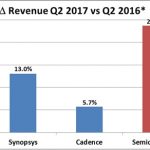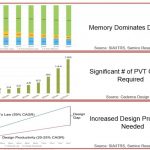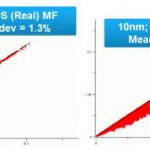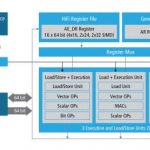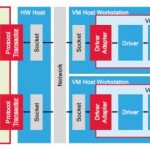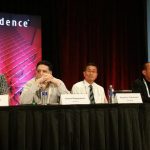I had the pleasure of being able to attend the CDNLive event held in the Boston, MA area last month and I was pleasantly surprised to see that Cadence highlighted Silicon Photonics as one of its Keynote topics. MIT Professor Duane Boning gave an excellent overview of the current state of silicon photonics and why he believes it is time… Read More
Semiconductor and EDA 2017 Update!
It really is an exciting time in semiconductors. The benchmarks on the new Apple A11 SoC and the Nvidia GPU are simply amazing. Even though Moore’s Law is slowing, the resulting chips are improving well above and beyond expectations, absolutely.
As I have mentioned before, non-traditional chip companies such as Apple, Amazon,… Read More
Improved Memory Design, Characterization and Verification
My IC design career started out with DRAM design, characterization and verification back in the 1970’s, so I vividly recall how much SPICE circuit simulation was involved, and how little automation we had back in the day, so we tended to cobble together our own scripts to help automate the process a bit. With each new process… Read More
Extraction Features for 7nm
Frequent Semiwiki readers are familiar with the importance of close collaboration between the foundries and EDA tool developers, to provide the crucial features required by new process nodes. Perhaps the best illustration of the significance of this collaboration is the technical evolution of layout parasitic extraction.… Read More
Overcoming Mixed-Signal Design and Verification Challenges in Automotive and IoT Systems
At the recent DAC conference in Austin I attended a panel discussion over lunch where engineers from four companies talked about how they approached mixed-signal design and verification challenges for automotive and IoT systems. It seems like 2017 was the year of automotive at DAC, while in 2016 it was all about IoT. Both segments… Read More
ARM and Cadence IP Simplify IoT System Design and Verification
As the Internet-of-Things (IoT) markets mature, we are seeing the complexity of IoT systems evolve from simple routing functions that connect IoT edge devices to the cloud into more complex system of systems that manage the interaction between multiple sensor-hubs. IoT sensor-hubs and gateways not only take care of basic care… Read More
Tensilica HiFi 3z DSP Core: Leading Energy Efficiency
Tensilica HiFi DSP family, dedicated to voice and audio processing, is shipping over 1 billion units worldwide annually, thanks to the 75+ licensees. The new HiFi 3z architecture offers more than 1.3X better voice and audio processing performance than its predecessor, the HiFi 3 DSP, which leads the industry in the number of audio… Read More
Virtualizing ICE
The defining characteristic of In-Circuit-Emulation (ICE) has been that the emulator is connected to real circuitry – a storage device perhaps, and PCIe or Ethernet interfaces. The advantage is that you can test your emulated model against real traffic and responses, rather than an interface model which may not fully capture… Read More
Cadence’s Tempus – New Hierarchical Approach for Static Timing Analysis
While at the 54[SUP]th[/SUP] Design Automation Conference (DAC) I had the opportunity to talk with Ruben Molina, Product Management Director for Cadence’s Tempus static timing analysis (STA) tool. This was a good review of how the state-of-the-art for STA has evolved over the last couple decades. While the basic problem hasn’t… Read More
Designing at 7nm with ARM, MediaTek, Renesas, Cadence and TSMC
The bleeding edge of SoC design was on full display last month at DAC in Austin as I listened to a panel session where members talked about their specific experiences so far designing with the 7nm process node. Jim Hogan was the moderator and the panel quickly got into what their respective companies are doing with 7nm technology already.… Read More


